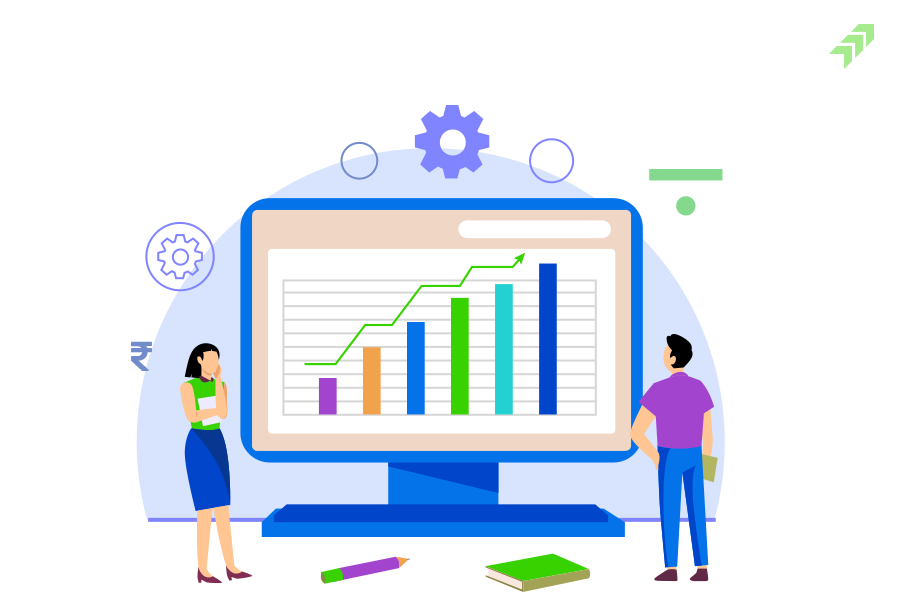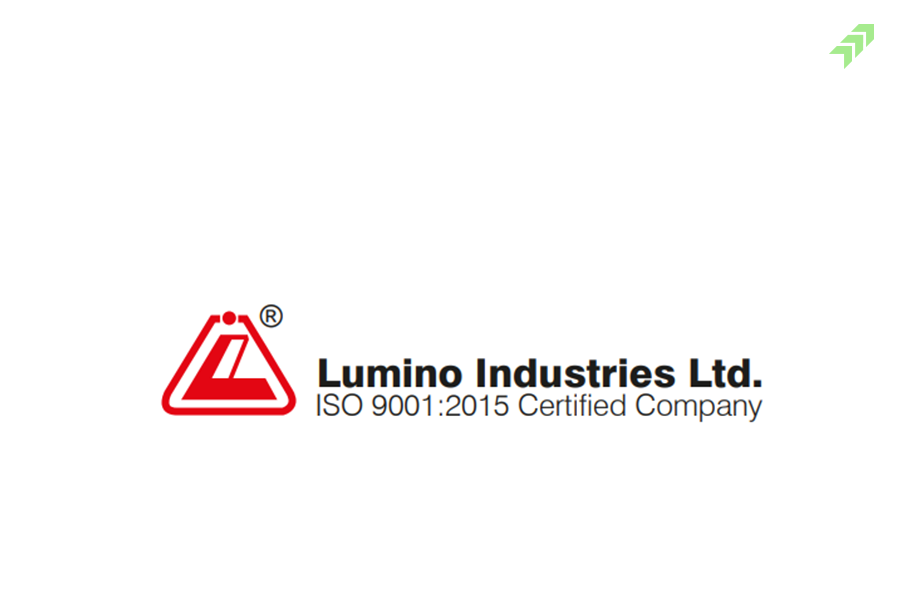Moving averages (MA)can be used for both trading and investing in the stock market with a short-term or long-term perspective. Apart from knowing the buy and sell trend, or support resistance you can use the convergences and divergences for trend reversal in the stocks, or market indices making it one of the most reliable technical indicators in the stock market.
Also Read: How to Use Moving Averages in Trading & Convergence Divergence
In short-term trading, you can use the simple moving average and exponential or weighted moving averages, but for intraday trading, you have to choose the best one. In day trading on candlestick charts, you can apply the moving average on daily, hourly or minute charts to get an idea of where to buy, sell or exit in stock. However, intraday is risky but if you use a combination of various tools and technical indicators you can make the best use of moving averages.
Also Read: Types of Risks Associated with Investing in the Stock Market
Using the moving averages for day trading can be profitable but it is not easy. You have to choose the best MA that can give the right indication. Here we will discuss only about best moving averages that are suitable for intraday trading and how to use them.
Best Moving Average for Intraday
Basically, there are three types of moving averages, simple moving average (SMA), exponential moving average (EMA) and weighted moving average (WMA) used in trading. But the question here is which one is suitable or would be best for intraday trading.
Also Read: How to Do Intraday Trading: Best Stocks, Charts & Strategies
There are various factors you need to consider while selecting the best MA for intraday trading. Moving average period is one of them that plays an important role while using the MA for trading with different time horizons. However, the selection of different period charts of patterns is another factor, you need to consider while using the MA for intraday trading.
5-8-13 Moving Averages Best for Day Trading
As per the technical analysis experts, a combination of 5, 8 and 13-bar simple moving averages is the most suitable MA for intraday trading strategies. These parameters are fine-tuned by a technical tool setting called, Fibonacci retracement, and also need to be an expert to use these settings properly and make the best use of this combination of MA.
Also Read: How to Use Fibonacci Retracement for Trading: Setting & Strategy
For intraday trading short-period moving averages can give a better indication. MA simply gives a signal or you can say the momentum in the stock. And, as per the technical experts, when there is momentum in the stock, it could be the best time to buy, while when momentum decreases it indicates, it’s time to sell the stock.
Also Read: What are the Types of Moving Averages & Best One for Trading
Choosing the right frame charts to apply the moving average for intraday trading would be another deciding factor when choosing the MA. For example, a 10 and 20-period simple moving average (SMA) would be the best option for intraday trading off 1-min charts. While the combination of 12 & 24 SMAs and 5, 8 & 13 SMAs fit the 5-min chart.
Best Moving Average Period for Day Trading
For short-term trading or intraday, you need a moving average that can react swiftly or respond immediately to the change in the price. Hence, instead of SMA, choose the EMA for intraday trading to get more accurate results. And when it comes to selecting the MA period, there are mainly three types of moving average periods you should consider.
Also Read: How to Select Stocks for Intraday: 10 Tips to Pic Best Stocks
A 9 or 10-day moving average period is the best-moving average for intraday trading. However, 21-day EMA can be also used for day trading but you have to apply another technical indicator in combination with moving averages crossover to know the trend reversal. However, for day trading use the hourly or minute chart patterns and apply the best moving average on the candlestick charts that can give you the trend of stock for that particular day.
Also Read: Top 5 Best Technical Indicators for Intraday or Day Trading
Best Moving Average for 1 Minute Chart
Minute chart-based trading gives you the tick-by-tick activity in the stock price, here you can apply a 50-day SMA or 20-day EMA. However, a 1-minute chart would be not enough to know the next moves of the stock, extend the chart minutes to 5 or 15 minutes.
Best Moving Average for 5 Min Chart
Checking the higher minutes chart let's say 5 minutes can give you a more stable trend compared to 1 minute chart. Here when you use the 5-minute chart, you can use the 20-day SMA or a 10-day EMA to create your intraday trading strategy.
Best Moving Average for 15 Min Chart
On the other hand, using the 15-minute chart, 20-days EMA is best suitable for a day trading strategy. When you use the 20-period EMA, the initial candlestick chart comes in contact with the 20 EMA, following the change in direction in the price trend. However, you can also use the high period moving average on the same chart for intraday.
Best Moving Average for 1 Hour Chart
Using the 1-hours chart for intraday trading can also give you the cues for the next few days. Here, you can use the combination of 50 and 20-day moving averages as per your lag-bearing capability. Using the 50-period EMA can tell you the support and resistance levels in the 1-hour time frame chart during the intraday trading. Compared to 20-day MA, 50-day period MA can give a better picture for formulating the next day's trading strategies.
How to Use Moving Averages for Day Trading?
Merely choosing the right duration period for moving averages would be not enough to make your intraday trading successful. Here, you need to formulate the right trading strategy that can give profits in trading and minimize the chances of losses.
Here you have to follow the 5-8-13 rule to make the best use of moving averages in intraday trading. Using the 5-8-13 Moving Averages, you can create the long and short positions in the stock, but there are certain rules in entering the trade, putting the stop loss or exit from your trade position. Let's find out how to use moving averages for intraday trading.
5-8-13 MA for Buying the Stock
Where to Enter into Trade: To enter into any trade, check if the 5-day SMA crosses the 8-day SMA and the 13-day SMA remains upwards. If all of them form an intersection at this point that indicates the price is going to move in an upward direction. For confirmation, if the next candlestick chart formation closes above the 5-day SMA indicating to creation of the buying position in the stock.
At Which Point Use Stop-Loss: At the time of putting the stop-loss for this trade, you can choose the low of the bullish candle, and that can be trailed when the market moves as per your expectations.
Where Book Profit or Exit: Similarly, when the stock price closes below the 5-day SMA on the chart, it means there is an indication of trend reversal and you should book the profit and exit from your position around this level.
Also Read: What is Profit Booking in Stock Market: Rules & Best Strategy
5-8-13 MA Rules for Short-selling
Where to Short in Stock: When the 5-days SMA crosses the 8-days SMA and 13-days SMA downwards and creates a point of intersection, then it indicates the price tends to move in at downward direction. Further in the next move, if a bearish candle ends below the 5-day SMA, you can go for short selling in such stocks.
Stop Loss for Short-selling: Here in the short-selling, you can use the high point of the bearish candle as a stop loss that can be trailed once the market moves as per your expectations.
Exit Strategy for Short-selling: If you have used the 5-8-13 moving averages rules for short-selling, to exit from such trade, see the bullish candlestick if it is formed above the 5-day SMA line, because of the intersection of the SMA lines, You can exit or book the profit in the stock.
Best Moving Average Settings for Day Trading
Choosing the right parameters in combination with the best time frame to create the best moving average settings would be the crucial point to make your intraday trading strategy successful. Here you can follow the 5-8-13 Moving Averages rule for day trading – and it can be used for creating a long as well as short position in the stock market.
Moving Average Settings for Intraday
For 1-minute charts, you can use the 10-day and 20-day simple moving averages. While for 5-minute charts these settings can be also used for day trading. However, this moving average setting works for quick trades to generate profits by many transactions.
And if you are going to use the dual moving average crossover strategy, then apply the 50-period EMA and 200-period EMA with a 1-hour time frame chart.
This would be the best EMA setting for day trading and works as the best exponential moving average crossover strategy for intraday traders to enter into a buying position when the 50-period EMA crosses above the 200-period EMA signals a bullish crossover.
On the other hand, to trigger the selling point, when the 50-period EMA crosses below the 200-period EMA, it indicates a bearish crossover for sellers. However, also check other indications and parameters like the next chart before entering into any trade positions.
Using the MA Setting to Buy the Stock
For using the moving average settings for buying the stocks, you have to use the dual moving average crossover strategy for the day trading. Here, as we already told you the MA settings would be, selecting the 50-day and 200-day EMA applying on the 1-hour chart and waiting till the 50-day EMA crosses the 200-day EMA, this indicates a bullish crossover.
But here you have to wait till the pullback or after the bullish crossover let the stock price consolidate here. You can enter her in the long trade, if the price breaks from the consolidation phase, and the 50-period EMA remains above the 200-period EMA.
Also Read: What is Breakout & Breakdown How to Identify Breakout in Stocks
MA Settings to Sell the Stocks
Just like the MA buying strategy, you can also use the MA for selling the stocks. Here again, you have to use the dual moving average crossover strategy for intraday trading. Apply the same period EMAs – 50-period and 200-period EMA on the 1-hour chart and wait for the 50-day EMA to cross below the 200-day EMA that indicates the bearish crossover.
Also Read: 7 Biggest Mistakes To Avoid While Doing Intraday Trading
Here again, when you see this bearish crossover happen, you have to wait for the consolidation or pullback around this level. And you can enter into the short-selling trade when price breakdowns below the consolidation and 50-day EMA trails below the 200-day EMA giving the best opportunity to earn profits from short-selling using the MA settings.
Also Read: What is Short Covering in Stock Market & How to Identify Rally
Conclusion
Let's end this discussion and wrap up, I think you can now utilize the moving averages in the intraday trading. The conversation says you can use all the moving averages and crossovers for intraday trading. But here you have to keep in mind selecting the right moving average period applied on the right time frame of the daily chart to get accurate results.
However, the 5-8-13 moving averages are the most suitable strategy for intraday trading. But for intraday, the exponential moving average on minutes chart settings works best for traders. However, depending on the stock price volatility and market trend you can adjust the parameters or alsopick and apply the other different period moving averages.
To get the best use of such technical indicators, you need to become an expert in technical analysis. Because there are many tools and technical indicators that can be used for day trading and if you don’t know which one is best suitable for intraday trading, which one is best for short-term trading and which indicator gives more accurate prediction for long-term investments in stock. Here in such situations, you need a stock market expert to analyse such things.
Moneysukh is right here to solve your fundamental analysis and technical analysis problems. Yes, it not only provides a one-stop investment and trading solution but also gives one of the best online trading platforms for equity, commodity and currency trading. To trade with Moneysukh, you just need to open a trading account and a demat account here.
Apart from recommendations and daily tips for trading and investing in stocks, Moneysukh also provides the best algo trading platform and trading strategies to clients looking to generate profits with a large number of trades through high-frequency trades. Clients trading or investing with Moneysukh can take advice from the research team and discuss the corporate actions and other activities in the market with the best discount broking services at the best pricing.
Also Read: How to Start Algo Trading in Moneysukh: A Best Algo Trading Platform


















1 Comment
I have read so many content on the topic of the blogger lovers however this article is genuinely a pleasant piece of writing,
keep it up.